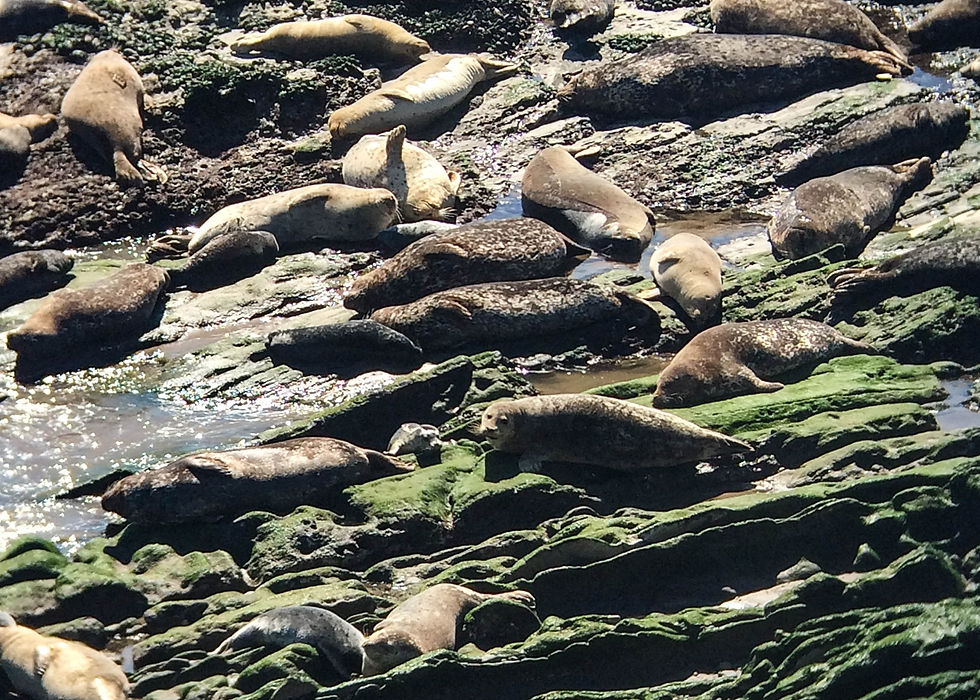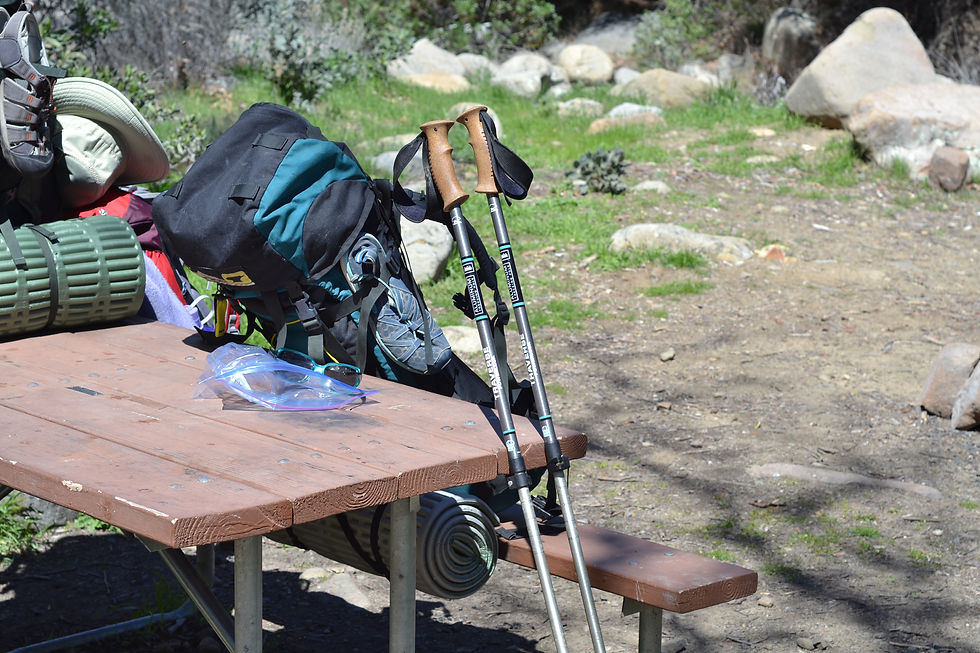5 Ways to Enjoy Nature This Spring
- The Skunk Corner

- Apr 7, 2019
- 4 min read
Baby animals, vibrant wildflower blooms, and flowing creeks are all in season right now, and it's a great time to get outside and enjoy what spring has to offer. The following activities should be a good starting point, but once you start you will find that there is also a lot more to explore.

1. Keep an eye out for nesting birds.
Sit quietly outside in your yard or in a natural area nearby and you may notice birds building nests or tending to young. Sometimes you will see a parent bird (or two) flying frequently back and forth from a certain location, sometimes with sticks or insects in their beaks, and this often means they have a nest there. Depending on where the nest is, you may be able to quietly observe it close up, but never touch the nest or trim vegetation around it as this disturbs the nest. If a parent bird approaches while you are visiting the nest, leave so that you don’t scare the parent away. If you ever find a bird that needs help, call a wildlife rehabilitator such as the Santa Barbara Wildlife Care Network.

2. Observe marine mammals.
Spring is the prime time to observe harbor seals from the Carpinteria Bluffs. January 1 through May 31 is the seals’ “pupping season,” meaning that they are birthing and raising young. To maintain their body temperatures, both young and adult seals must “haul out,” or rest on land, between 7 and 12 hours per day. Although you can observe this year round at the Carpinteria seal rookery, spring is unique because of the large numbers of seals and because of the pairs of mothers and young. For more information, visit the website of Carpinteria Seal Watch, or ask one of their volunteers at the bluffs. In addition, you can look for gray whales on their annual migration. Gray whales spend the winters off the coast of Mexico and then make their way north, past Santa Barbara, in the spring. Over 20,000 whales are estimated to make this migration every year. If you spend some time on a bluff looking over the ocean, or at the beach, you may be lucky enough to observe one. Volunteers in Goleta have been counting the whales and observing over 50 each day lately. Any elevated area overlooking the ocean can be a good vantage point for watching whales, including the Douglas Family Preserve, More Mesa, the Ellwood Bluffs, the area above the steps at El Capitan State Beach, and the Carpinteria Bluffs.

3. Photograph spring flowers and greenery.
Whether you are an avid nature photographer or have never tried it before, this season is a great time for this activity because of all the vibrant flora that is around. This year is especially good because of the “super bloom” that has resulted from the rainy winter following many dry years. Photographing plants encourages you to take a closer look at the flowers and leaves, and the insects and birds that make use of them. If you don’t have a camera, use your phone. You may observe flower varieties such as California poppy, bush sunflower, lupine, and others depending on where you look. Good places to find wildflowers to photograph or just to enjoy include the Santa Barbara Botanical Garden, the Douglas Family Preserve, the Carpinteria Salt Marsh, the Santa Ynez River area, and Figueroa Mountain. While you’re there, look for painted lady butterflies, which have been migrating north from the US-Mexico border and have been unusually abundant this year due to the superbloom.

4. Look for signs of nocturnal wildlife in your yard.
Birds and flowers may be obvious candidates for spring nature observation on a sunny day, but don’t forget about the wildlife that comes out at night! Skunks, raccoons, and opossums will be more commonly seen once May or June comes, since they will be with their young then and will often appear before it is completely dark, but now is a good time to start monitoring your yard for signs of their presence. You can do so by looking for evidence such as scat, tracks, possible burrows under structures or paved areas, scratch marks left on wooden fences by raccoons, and possible pathways through greenery and under fences. To see if a possible pathway, such as a hole under a fence, is still in use, pile grass cuttings, fallen leaves, or straw in the pathway and see if this is disturbed in the morning. The same technique can be used for monitoring whether a burrow is active.

5. Go backpacking.
With comfortable temperatures outdoors, water from the recent rains still flowing in the creeks, and wildflowers blooming, now is the perfect time to go backpacking in an area such as Figueroa Mountain. Even some campsites that usually lack a water source, such as the Twin Oaks camp near Hurricane Deck, have water this season, and others that do have an annual water source have even more water this year than usual, making for good swimming holes. It is useful to bring water shoes for some of the more difficult creek crossings.





Comments